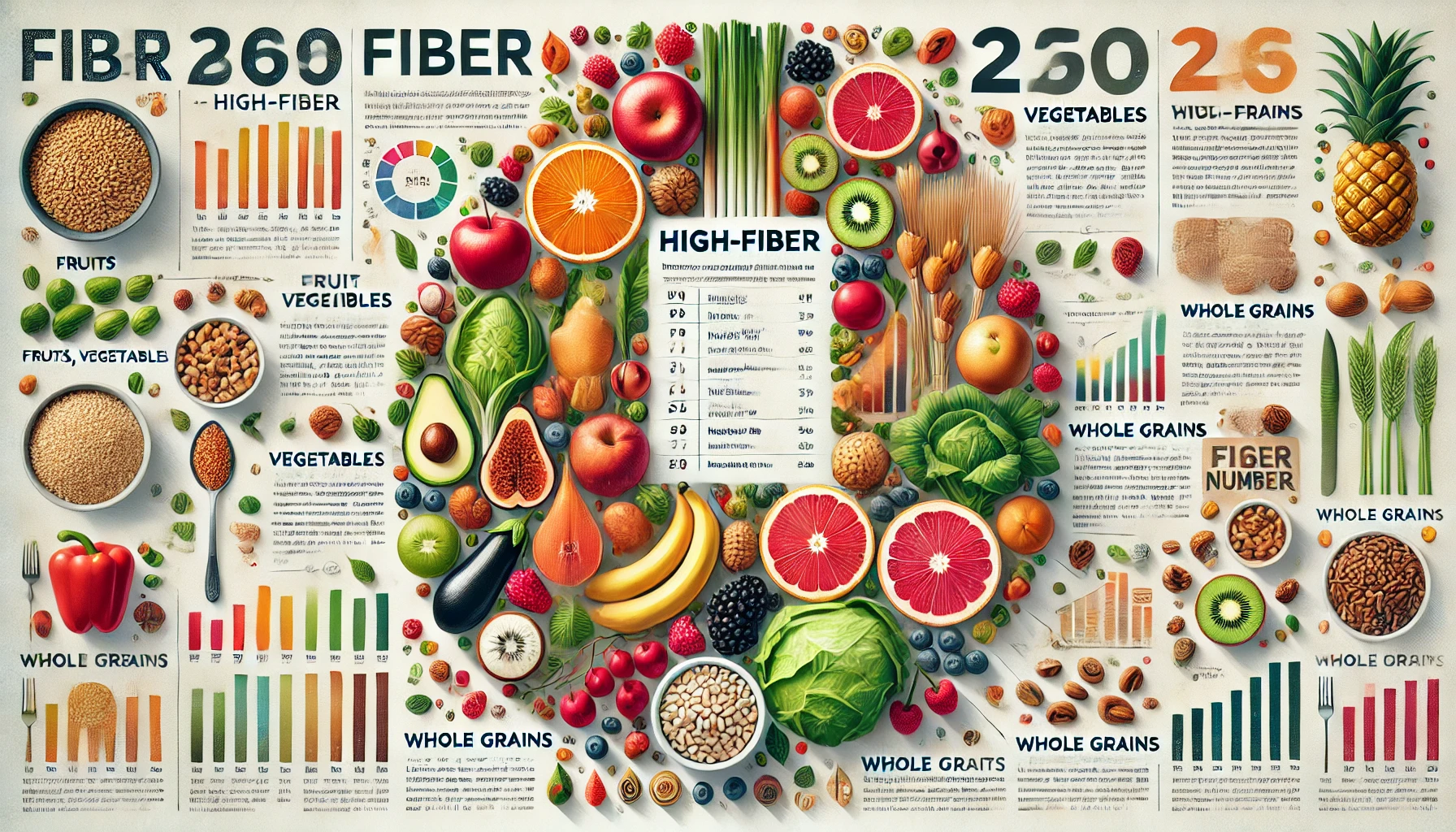The fiber number chart is a tool widely used in nutrition to help individuals understand the fiber content in various foods. Fiber is an essential part of a healthy diet, known for supporting digestion, regulating blood sugar, and contributing to heart health. However not all fibers are created equal. This article will guide you through the basics of fiber, the different types of fiber, and how to use a fiber number chart to maximize health benefits.
What Is Fiber?
Fiber is a type of carbohydrate found in plant-based foods that the body cannot fully digest. While most carbohydrates are broken down into sugars, fiber remains largely intact, moving through the digestive system and offering various health benefits. Fiber comes in two main forms:
- Soluble Fiber: This type dissolves in water and forms a gel-like substance in the stomach. Soluble fiber can help reduce cholesterol levels, control blood sugar, and improve nutrient absorption.
- Insoluble Fiber: Insoluble fiber does not dissolve in water. Instead, it adds bulk to the stool, aiding in digestion and promoting regular bowel movements.
Both types of fiber are important for health, and many foods contain a mix of soluble and insoluble fiber.
What Is a Fiber Number Chart?
A fiber number chart is a tool that lists the fiber content of various foods, typically expressed as grams of fiber per serving. It allows people to easily identify high-fiber foods and meet daily fiber intake goals. The chart typically includes whole grains, fruits, vegetables, legumes, nuts, and seeds, providing a quick reference for planning a fiber-rich diet.
How to Read a Fiber Number Chart
Fiber number charts can vary slightly, but most provide information on foods in categories such as:
- Grains: High-fiber options include whole grains like oats, barley, quinoa, and brown rice.
- Fruits: Fruits like apples, pears, and berries are excellent sources of fiber, especially when eaten with the skin.
- Vegetables: Leafy greens, root vegetables, and legumes contain significant amounts of fiber.
- Nuts and Seeds: Chia seeds, flaxseeds, almonds, and walnuts provide a fiber boost along with healthy fats.
A fiber number chart is typically organized to show the serving size, type of food, and grams of fiber, helping individuals easily compare foods and choose those with higher fiber content.
Why Fiber Intake Matters
Fiber is crucial for various bodily functions, and its benefits extend far beyond digestion. Here are some of the top reasons to ensure adequate fiber intake:
- Digestive Health: Fiber helps maintain a healthy digestive tract by promoting regular bowel movements and preventing constipation.
- Heart Health: Soluble fiber, in particular, helps lower LDL cholesterol levels, reducing the risk of heart disease.
- Weight Management: High-fiber foods promote satiety, helping individuals feel fuller for longer and potentially aiding in weight management.
- Blood Sugar Control: Fiber slows down sugar absorption, helping to stabilize blood sugar levels and reduce the risk of type 2 diabetes.
Recommended Daily Fiber Intake
The recommended daily fiber intake varies by age, gender, and individual health needs. Generally:
- Men (ages 19-50): 30-38 grams per day
- Women (ages 19-50): 21-25 grams per day
- Older adults (50+): 21-30 grams per day
A fiber number chart can help individuals ensure they meet these daily targets by offering easy access to high-fiber food options.
Sample Fiber Number Chart
Below is a sample fiber number chart showing the approximate fiber content of various foods (per 100g serving):
| Food | Fiber Content (g) |
|---|---|
| Black Beans | 15.2 |
| Lentils | 7.9 |
| Oats | 10.1 |
| Avocado | 6.7 |
| Raspberries | 6.5 |
| Almonds | 12.5 |
| Broccoli | 2.6 |
| Carrots | 2.8 |
| Quinoa | 2.8 |
| Chia Seeds | 34.4 |
This sample chart shows that chia seeds have the highest fiber content per serving, making them an excellent choice for boosting fiber intake.
Using a Fiber Number Chart to Plan Meals
Incorporating more fiber into meals can be simple with the help of a fiber number chart. Here’s how you can build a high-fiber meal plan:
- Breakfast: Choose oatmeal topped with berries and chia seeds for a fiber-packed start to the day.
- Lunch: A salad with leafy greens, carrots, and avocado provides a mix of soluble and insoluble fiber.
- Dinner: Opt for a whole grain like quinoa with black beans and roasted vegetables for a filling, fiber-rich dinner.
- Snacks: Keep almonds, apples, or carrots on hand for high-fiber snacks.
Tips for Increasing Fiber Intake Safely
Increasing fiber intake is beneficial, but it should be done gradually to avoid digestive discomfort. Here are some tips:
- Start Slow: Gradually increase fiber intake to give the digestive system time to adjust.
- Stay Hydrated: Drinking water helps fiber move through the digestive tract smoothly.
- Mix Fiber Types: Include a variety of foods with both soluble and insoluble fiber for balanced health benefits.
Conclusion
The fiber number chart is a valuable tool for anyone looking to improve their diet and health. By understanding fiber content across various foods, you can make informed choices to support digestion, heart health, weight management, and blood sugar control. Adding more fiber to your diet doesn’t have to be complicated—with a fiber number chart and a few high-fiber foods on hand, you’re well-equipped to meet daily fiber goals and enjoy the many benefits fiber has to offer.






Leave a Reply